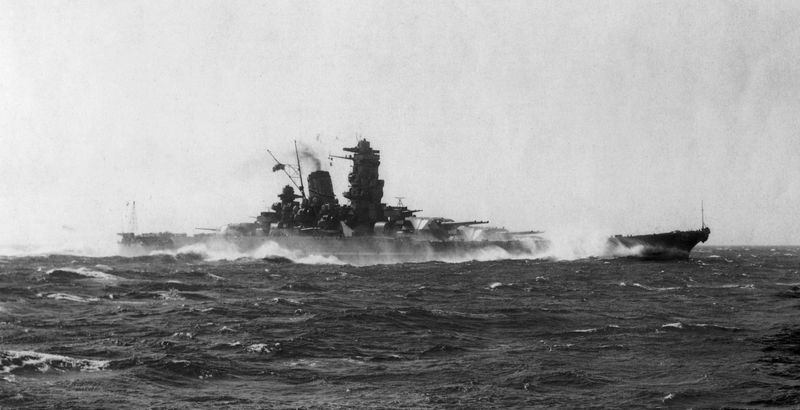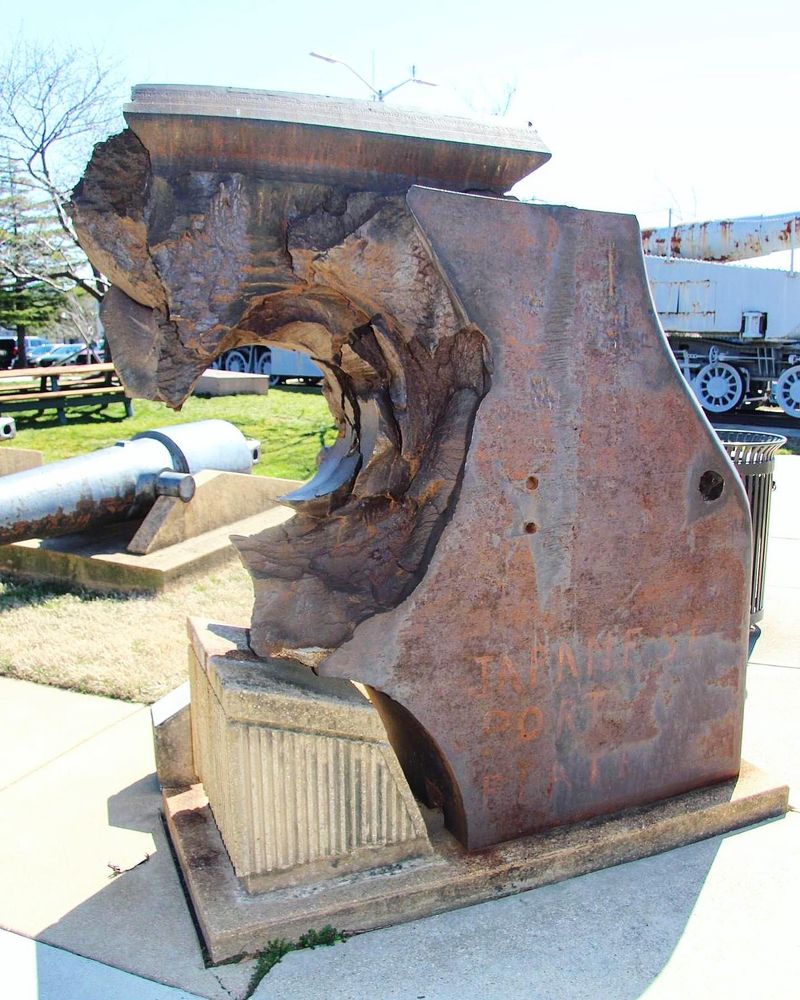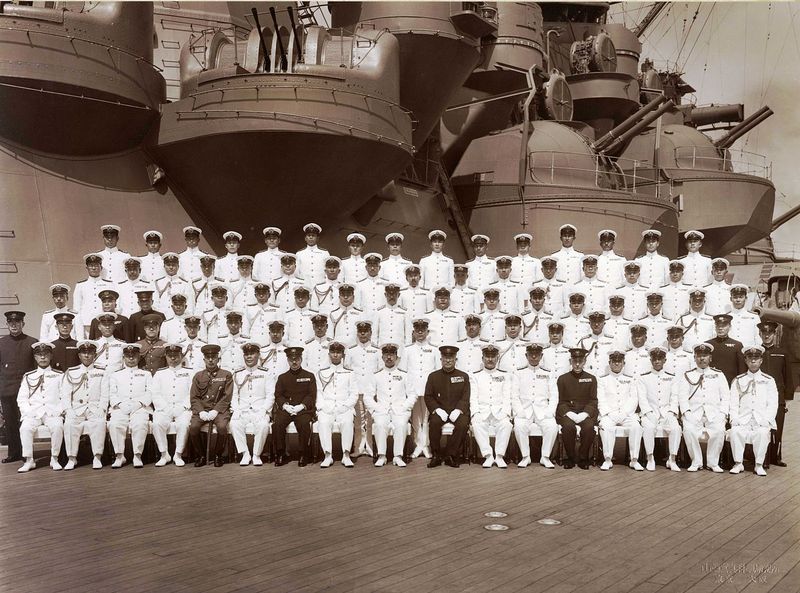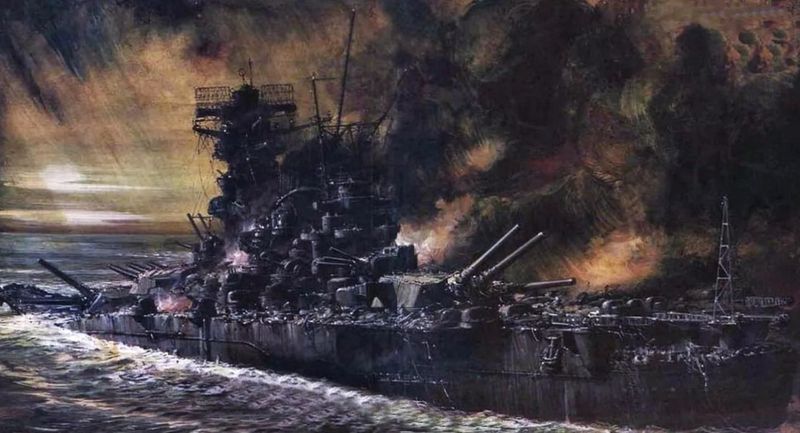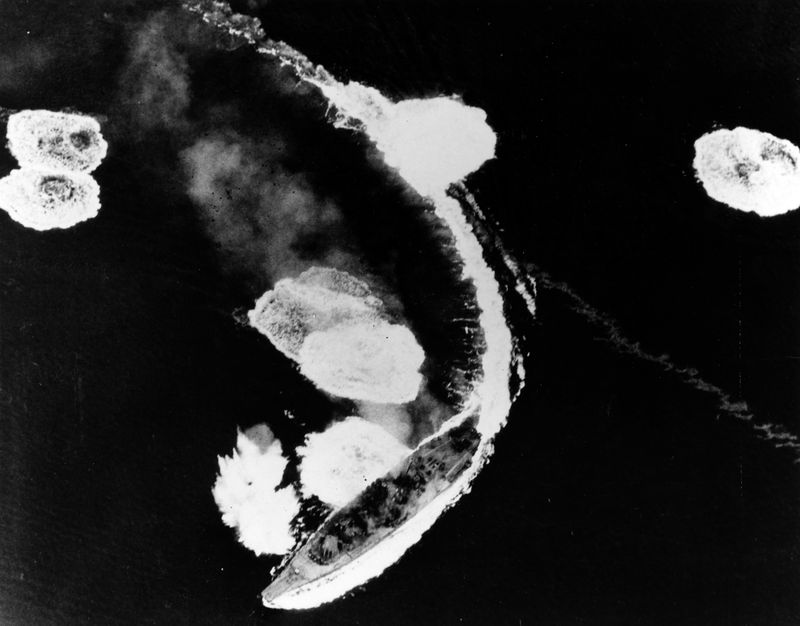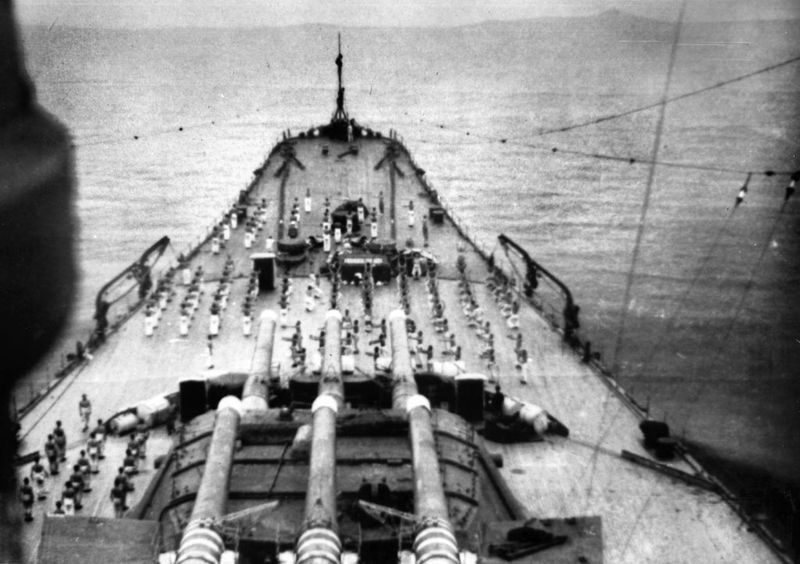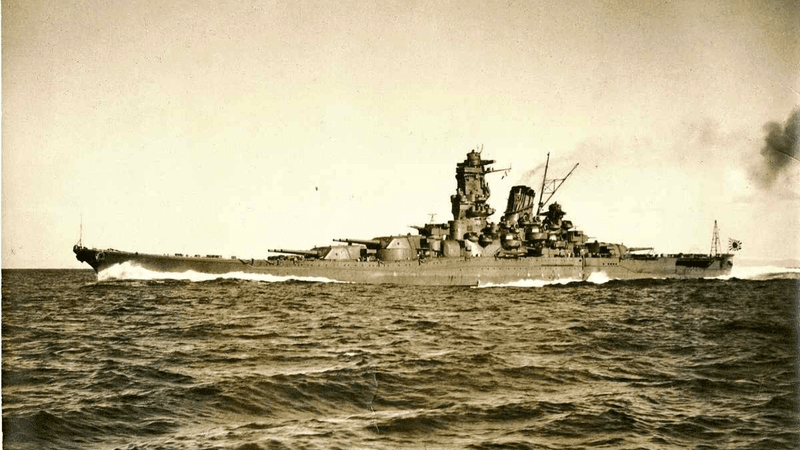The Yamato battleship, a marvel of naval engineering, is remembered not only for its immense size but also for its dramatic final mission during World War II. Here are ten fascinating facts about the Yamato that reveal its historical significance and the impressive, albeit tragic, last stand it made.
1. It Was a Floating Fortress with the Largest Naval Guns Ever Built
Imagine a ship so powerful that it carried the largest naval guns ever built. The Yamato was fitted with nine enormous 18.1-inch (460 mm) guns. Each shell packed the weight of a small car, exemplifying its fierce might.
These massive guns made Yamato a floating fortress, capable of intimidating any foe. Its sheer firepower was unmatched, making it a symbol of naval superiority.
Yet, this terrifying arsenal was rarely used in combat. The battleship’s might was overshadowed by the rise of air power, leaving Yamato’s guns to silently rest.
2. Built in Total Secrecy
In an era marked by espionage, the construction of the Yamato was shrouded in secrecy. Japan built this colossal battleship in an enclosed dockyard, hidden from prying eyes.
A canopy draped over it ensured that American spy planes could not catch a glimpse. This clandestine effort was a testament to the importance and scale of the project.
Such secrecy highlights the strategic value placed on Yamato, as it represented a potent symbol of naval strength and a critical asset in Japan’s military ambitions.
3. It Could Outgun Any Opponent — But Rarely Fired Its Main Guns
Though designed to outgun any adversary, Yamato rarely unleashed its main artillery. By the time it was operational, the dynamics of warfare had shifted.
Air power eclipsed the dominance of battleships, rendering Yamato’s guns largely ceremonial. Despite its intimidating arsenal, it saw little combat action.
The irony of having such unrivaled firepower and yet seldom using it underscores a poignant aspect of Yamato’s story, reflecting the evolving tactics of modern warfare.
4. It Was Practically Unsinkable by Traditional Naval Weapons
Yamato’s armor was legendary, designed to withstand conventional naval assaults. Its thick plating could shrug off most standard naval shells and torpedoes.
This formidable defense made it a near-impenetrable fortress on water. However, its greatest strength was also its Achilles’ heel.
While protected against traditional attacks, it was vulnerable to aerial bombardment. This vulnerability foreshadowed the battleship’s fate in an age dominated by air power.
5. It Had an Entire City’s Worth of Crew
A floating city best describes the Yamato’s bustling life at sea. More than 3,000 sailors called it home, surpassing even some aircraft carriers in crew size.
The ship boasted amenities like a bakery, barber shop, and even air conditioning, ensuring a semblance of normalcy amid war.
This self-contained world at sea was a testament to the complexity and scale of operating such a massive battleship, offering a glimpse into the lives of those aboard.
6. It Was Sunk in a Suicide Mission
Operation Ten-Go marked Yamato’s final voyage—a perilous suicide mission. This bold operation sent the battleship towards Okinawa with limited fuel.
The mission was essentially a one-way trip, as returning was not an option. It reflected Japan’s desperation and determination in the face of mounting defeat.
Yamato’s crew embarked on this journey knowing the grim odds, embodying a spirit of sacrifice and duty in their last stand against overwhelming forces.
7. American Planes Sank It Before It Reached Its Target
The skies darkened with over 300 American aircraft as they launched a massive assault on Yamato. The battleship was overwhelmed before reaching Okinawa.
Despite its formidable defenses, Yamato stood little chance against the relentless aerial attack. The ship didn’t even fire its main guns in this final encounter.
This decisive strike marked the end of the Yamato, illustrating the shift in naval warfare towards air supremacy and highlighting the battleship’s tragic end.
8. The Explosion Was Visible for Miles
When Yamato finally succumbed, its end was marked by a cataclysmic explosion. The ammunition magazine detonated, creating one of history’s largest non-nuclear blasts.
This fiery spectacle was visible for miles, a fittingly dramatic end for such a legendary ship. The explosion served as a stark reminder of the battleship’s latent power.
Witnesses to this event were left in awe, the magnitude of the blast echoing Yamato’s once-mighty presence on the seas.
9. Only 10% of the Crew Survived
Out of over 3,000 sailors aboard the Yamato, only about 276 survived its sinking. The sea claimed the rest, leaving a mere fraction to tell the tale.
These survivors faced the grim task of recounting the ship’s final moments. Their stories paint a poignant picture of bravery amid chaos.
The heavy loss of life underscores the human cost of war, reminding us of the sacrifices made aboard the Yamato during its last stand.
10. Its Legacy Still Captivates Japan
Though the Yamato lies beneath the waves, its legacy endures. In Japan, it remains a symbol of sacrifice and lost glory.
The battleship has been immortalized in books, films, anime, and even through a full-scale replica museum ship in Kure, Japan.
This enduring fascination reflects the cultural impact of Yamato, going beyond its military role to become a poignant reminder of a pivotal time in history.


